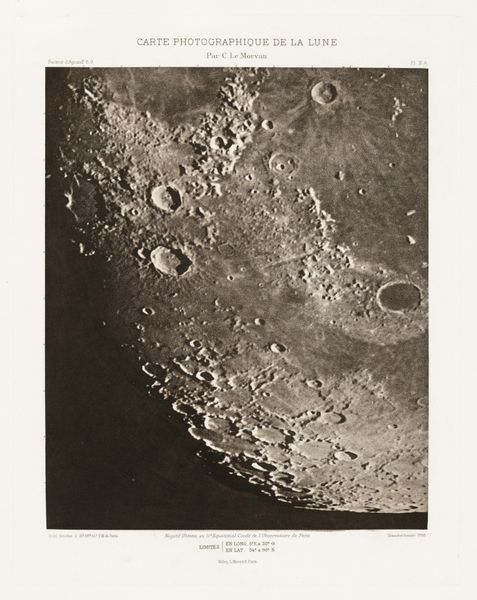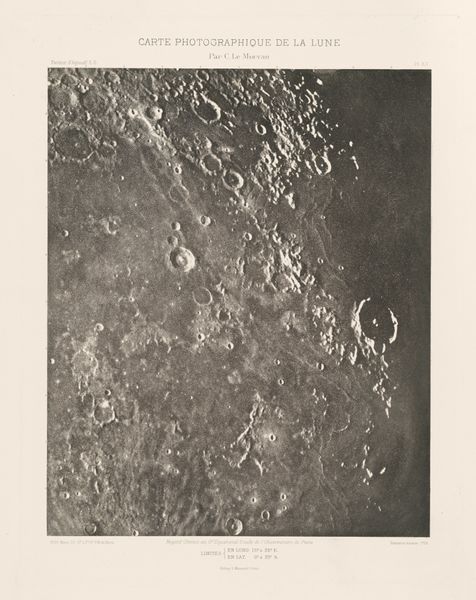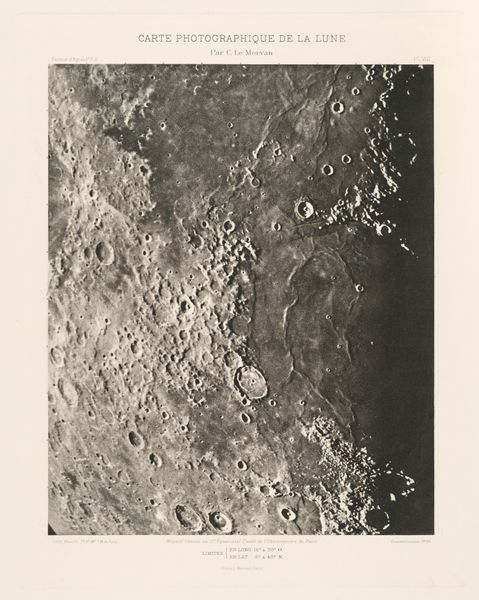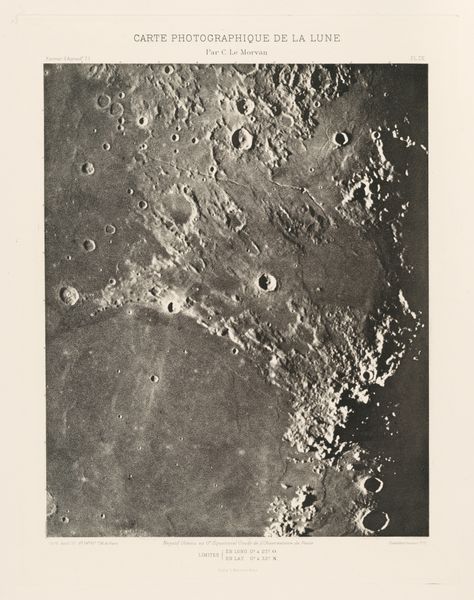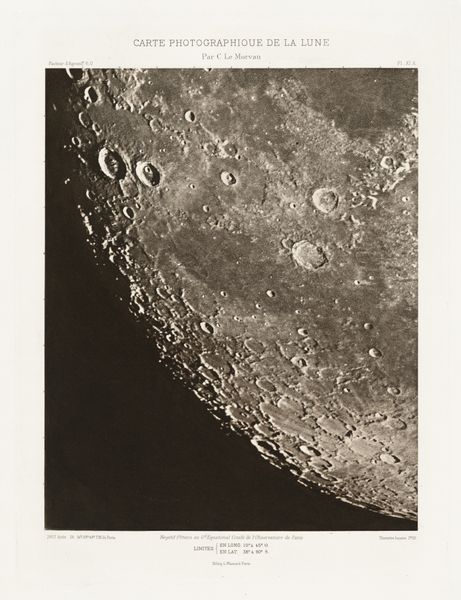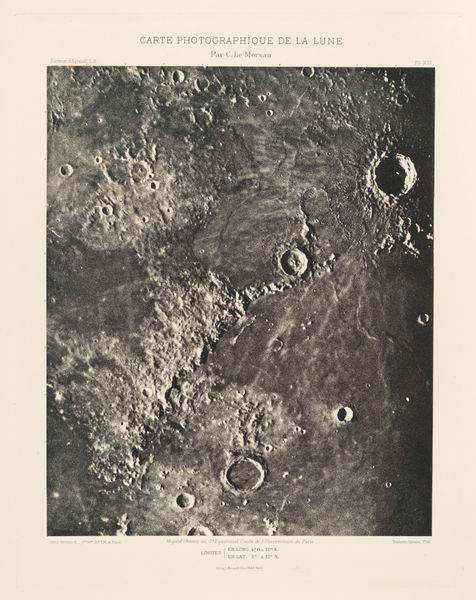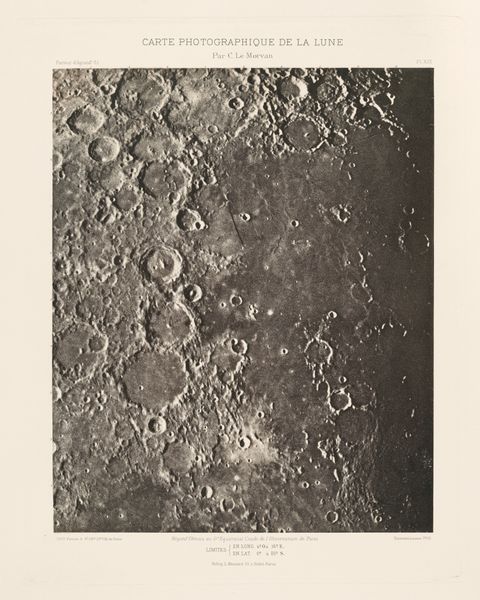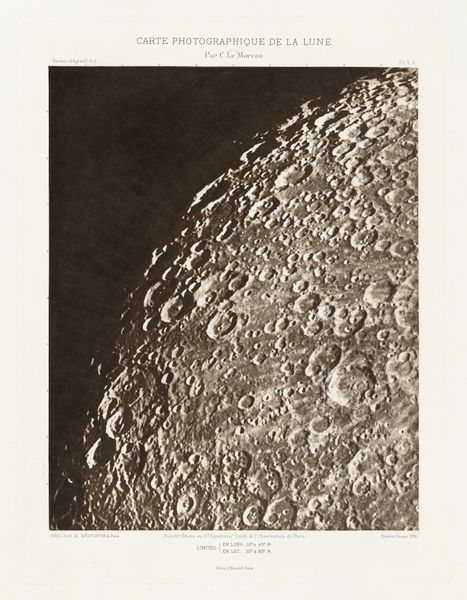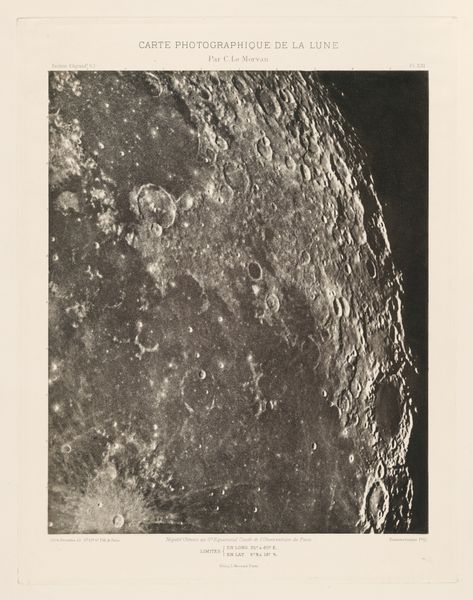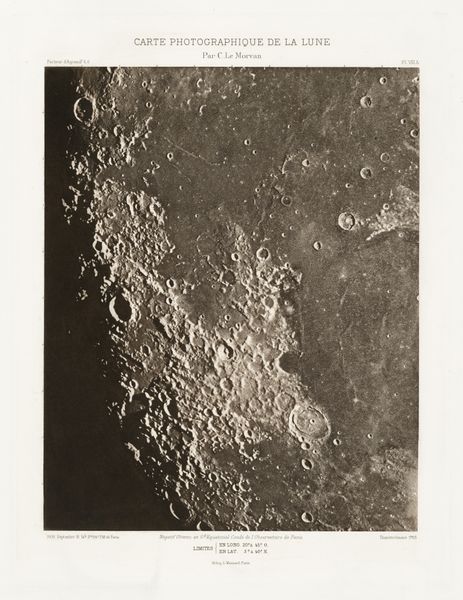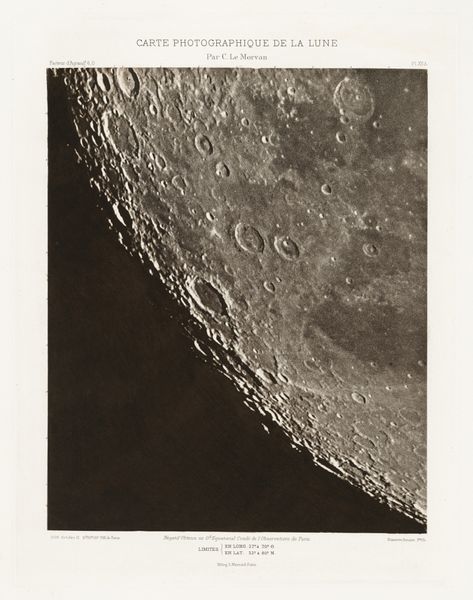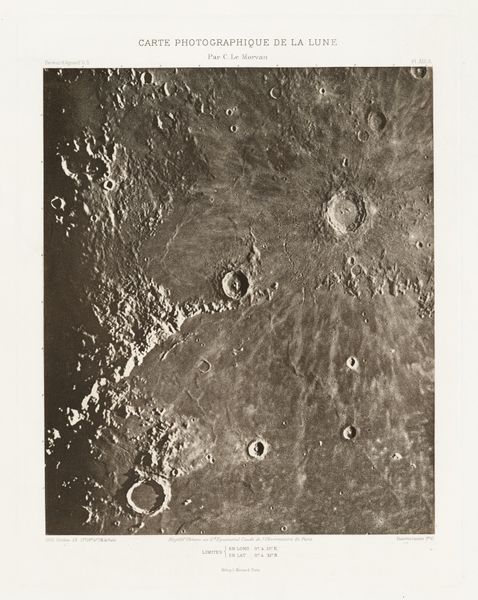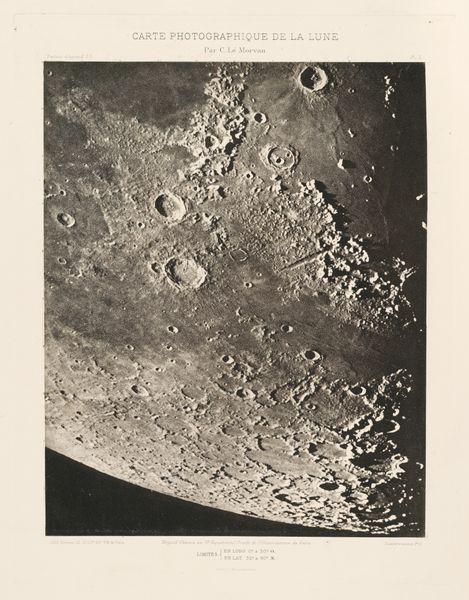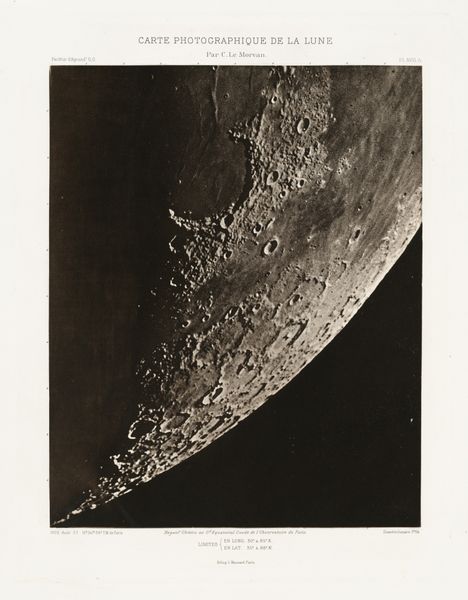
Carte photographique de la lune, planche XVIII (Photographic Chart of the Moon, plate XVIII) Possibly 1902 - 1914
0:00
0:00
print, photomontage, photography
# print
#
photomontage
#
landscape
#
photography
#
geometric
Dimensions: image: 31.1 × 25.5 cm (12 1/4 × 10 1/16 in.) plate: 38.9 × 29.5 cm (15 5/16 × 11 5/8 in.) sheet: 49 × 37.9 cm (19 5/16 × 14 15/16 in.) tissue: 42.55 × 37.47 cm (16 3/4 × 14 3/4 in.)
Copyright: National Gallery of Art: CC0 1.0
Editor: Okay, next up we have Charles Le Morvan’s "Carte photographique de la lune, planche XVIII," a photomontage print from around 1902 to 1914. It really gives you a sense of the moon’s stark and barren landscape. What strikes you about this piece? Curator: I see a deliberate engagement with the means of production. Consider the labor involved in meticulously assembling this photomontage. Each photographic fragment, likely produced through a highly technical and painstaking process for the time, contributes to the overall representation. This pushes the boundaries of art, blurring the lines between scientific document and artistic expression. What social contexts informed its production and reception? Editor: I'm not sure; maybe an increasing public interest in science and the cosmos around the turn of the century? Curator: Exactly! This also coincides with the burgeoning industries supporting photography. From the lens grinders and chemical manufacturers to the printers who produced the final work, a whole network of labor enabled this image to exist. This print reveals the materiality of its making – the textures of the photographic paper, the precision of the cuts and alignments, all testament to the production processes involved. Do you notice how it uses the conventions of landscape art? Editor: Yes, I see the horizon and sense of depth. It does create a somewhat familiar scene. So, it is not really about space as much as the labor behind it? Curator: Not exclusively, but seeing it through the lens of labor helps us appreciate the choices and skills involved in translating something like the moon, a space object, into a material form accessible to viewers. And think about how these types of landscapes influence how we think about material limitations! Editor: That’s fascinating. It reframes my perspective on what I initially perceived as just an image of the moon. Curator: Indeed, and I've come to see this piece in a new light too, with a renewed awareness of how its historical context shaped its physical form.
Comments
No comments
Be the first to comment and join the conversation on the ultimate creative platform.
